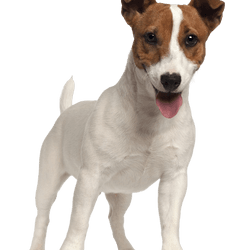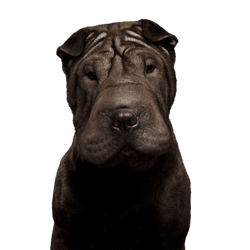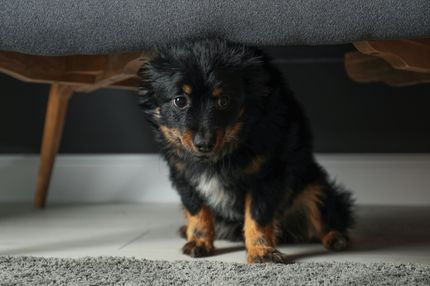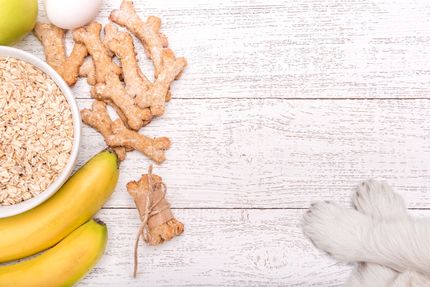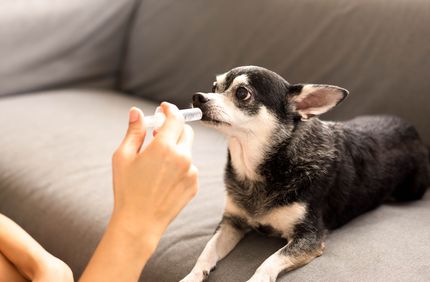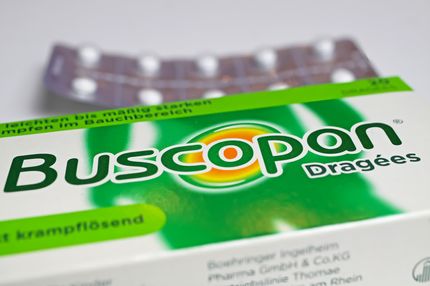Facts & Origin
Rus-A-Pei: The robust mix of Jack Russell Terrier and Shar-Pei
The Rus-A-Pei is an interesting and unusual mix of Jack Russell Terrier and Shar-Pei. With its unique combination of traits, this mix is a companion dog that is as distinctive as it is charming.
Origin and history
As a mixed breed dog , the Rus-A-Pei is a relatively new breed and its specific history is not well documented. However, its parent breeds, the Jack Russell Terrier and the Shar-Pei, have notable backgrounds. The Jack Russell Terrier, originally from England, is known for its energy and courage. The Shar Pei, on the other hand, originated in China and is known for its wrinkles and independent temperament.
Suitability and attitude
The Rus-A-Pei is well suited to a variety of lifestyles. With enough exercise, he can be equally happy in an apartment or a house with a garden. He is a good family dog and can do well with older children, although his independent streak means he does best with consistent and loving training.
| Alternate Name | - |
| Origin | England - China |
| Life expectancy | 9 - 16 years |
| Care requirements | low-maintenance |
| Activity level | high - average |
| FCI group | not recognised |
| AKC group | not recognised |
| KC group | not recognised |
More Jack Russell Terrier mixes
More Shar Pei mixes
Attitude, character and temperament of the breed
Possible character traits of the Rus-A-Pei
The Rus-A-Pei has an interesting mix of character traits from both parents. He can exhibit the energy and playfulness of the Jack Russell Terrier and the independence and calm temperament of the Shar-Pei. He is a courageous, loyal, and often loving dog who, with proper training and socialization, can be an excellent family dog and a loyal companion.
Character
Typical diseases and care
Like all breeds, the Rus-A-Pei has certain health problems to be aware of. These include skin problems caused by the Shar-Pei's wrinkles, as well as eye problems and hip dysplasia. Regular medical check-ups are therefore important.
Grooming the Rus-A-Pei is fairly simple, as his short coat requires only occasional brushing. If he has inherited the wrinkles of the Shar-Pei, they must be carefully cleaned and kept dry to avoid infection.
What does this mongrel look like?
The Rus-A-Pei is a medium-sized dog that weighs between 15 and 23 kg. Its appearance can vary depending on which parent it resembles. He may have the wrinkles of a Shar-Pei, but the compact size and strong build of a Jack Russell Terrier. His coat is usually short and can come in a range of colors including black, brown, white, and combinations thereof.
Known Diseases
Cataract
Cataracts are still one of the most common causes of blindness, even in dogs.
Numbness
Often occurs in old age.
Ataxia
Ataxia (from Greek ἀταξία ataxia 'disorder' 'irregularity') is a generic term in medicine for various disorders of movement coordination. Ataxia can occur even when there is no paralysis (paresis), that is, when there is normal muscle strength.
Atopy
Canine atopic dermatitis or environmental allergy is characterized by itching with scratching, biting, and rubbing of the face, paws, and belly
Dermatophytosis
Dermatophytosis (synonym dermatophytosis, from ancient Greek τὸ δέρμα derma, German 'skin' and ancient Greek φυτόν phyton, German 'plant') or tinea (Latin for 'woodworm', 'moth') is a skin fungal disease caused by specific fungi (dermatophytes).
extreme whiteness
May be associated with some other diseases.
Legg-Calve-Perthes
Legg-Calvé-Perthes disease (aseptic femoral head necrosis) is a growth disorder of the femoral head.
Dislocations
Lenticular and patella luxation occur in some breeds and affect the eye.
Myelopathy
Degenerative myelopathies of dogs are a series of slowly progressing neurological diseases associated with destruction of the spinal cord. These diseases are associated with slowly progressive movement disorders of the hindquarters.
Skin inflammations
Can be hereditary in certain breeds.
Amyloidosis
Amyloidosis refers to a group of diseases that share a common feature: the pathological abnormal deposition of a fibrous protein called amyloid in various tissues of the body. Several organs are often involved.
FAQ
-
It is usually between 25 and 38 centimeters tall.
-
It can live on average between 10 and 15 years.
-
These dogs can come in a variety of colors, including fawn, red, beige, gray and black.
-
He needs regular brushing and bathing to keep his coat in good condition. He should also be trimmed regularly to remove excess fur and keep him in shape.
-
Yes, they are known for their high energy levels and may need extensive physical training on a regular basis to stay healthy and happy.
